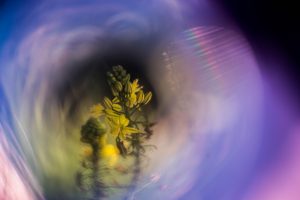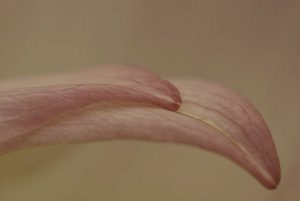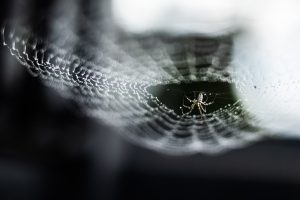Macro Photography: Conquering the Focusing Challenge
There’s something magical about macro photography—revealing intricate details of our world that often go unnoticed by the naked eye. The delicate hairs on an insect’s leg, the complex structure of a flower’s stamen, or the perfect symmetry of a snowflake. Yet anyone who has ventured into this fascinating realm knows that achieving tack-sharp focus can be frustratingly difficult.
Why Autofocus Often Fails in Macro Photography
If you’ve ever found yourself repeatedly pressing the shutter halfway down, hoping your camera will lock focus on that tiny subject, only to watch it hunt back and forth without success—you’re not alone. Autofocus systems, as sophisticated as they’ve become, often struggle in macro situations for several key reasons:
Extremely Shallow Depth of Field
At macro distances, your depth of field (the area that appears sharp in your image) becomes paper-thin—sometimes less than a millimeter. Even the most advanced autofocus systems can struggle to hit such a precise target, especially if there’s even the slightest movement of the camera or subject.
Low Contrast Subjects
Many macro subjects like flower petals or insect wings can have subtle tonal transitions that don’t provide the distinct contrast edges that autofocus systems rely on to detect focus. Without clear contrast boundaries, your autofocus may search endlessly without finding a lock point.
Moving Subjects
That butterfly or bee won’t sit still for your portrait session! The slightest breeze can send a flower swaying, and living subjects have agendas of their own. Autofocus simply can’t react quickly enough when working with such narrow margins for error.
Changing Light Conditions
Close-up photography often means you or your equipment cast shadows on your subject, creating challenging and changing lighting that can further confuse autofocus systems.
Better Approaches for Macro Focusing Success
After years of trial and error (and plenty of frustratingly out-of-focus images), I’ve developed these more reliable approaches that have dramatically improved my macro photography success rate.
Manual Focusing Techniques
Taking full control of focus is often the best solution for macro work:
- Focus Rings Are Your Friends: Modern lenses with focus-by-wire systems can be finicky for macro work. Consider dedicated macro lenses with mechanical focus rings that offer more tactile feedback and precision.
- Magnified Live View: Most modern cameras allow you to zoom in on your live view display by 5x, 10x, or even more. This magnification makes manual focusing far more precise than trying to judge through the viewfinder.
- Tripod + Remote Release: Eliminating camera shake is crucial. A solid tripod combined with a remote shutter release keeps everything perfectly still during focusing and exposure.
- Focus Bracketing: When depth of field is incredibly thin, consider taking multiple shots with slightly different focus points and blend them later through focus stacking. Many newer cameras offer automated focus bracketing features.
Embrace Focus Peaking
If your camera offers focus peaking, it’s a game-changer for macro work:
- Visual Confirmation: Focus peaking highlights the areas of your image that are in sharp focus with a bright color overlay (typically red, yellow, or blue), making it immediately obvious where your focus falls.
- Real-Time Feedback: As you adjust manual focus, you can watch the peaking highlights shift across your subject, allowing for incredibly precise focus placement.
- Customizable Sensitivity: Most cameras let you adjust the sensitivity of focus peaking detection. For macro work, setting this to “low” often provides the most accurate indication of the truly sharp areas.
The Camera Movement Technique
One of the most effective techniques I’ve discovered involves a complete rethinking of how we approach focus:
- Set Manual Focus at a Fixed Point: Rather than constantly adjusting your focus, set it to a specific magnification and distance and leave it there.
- Move the Camera: Gently rock your body or the camera forward and backward by tiny increments until your subject comes into perfect focus in the viewfinder or on the screen.
- Take the Shot at Peak Focus: When you see the subject snap into sharpness, that’s when you press the shutter. This technique is particularly effective for handheld macro work.
- Rails Systems: For studio work, consider a macro focusing rail that allows you to make microscopic adjustments to camera position with precision control.
Putting It All Together
The most successful macro photographers often combine these approaches. For example, using focus peaking to get in the ballpark, then fine-tuning with the camera movement technique while watching the magnified live view.
Remember that macro photography requires patience and practice. Even professionals expect a lower hit rate with macro subjects than with other genres. The technical challenges are significant, but that’s precisely what makes a perfectly sharp macro image so rewarding.
The next time you find yourself frustrated with autofocus failures in your macro work, try these alternative approaches. Your success rate will improve dramatically, and you’ll gain a deeper appreciation for the technical craft behind these magical close-up perspectives of our world.
What focusing techniques have worked best in your macro photography adventures? Share your experiences in the comments below!
If you’re excited to take your close-up photography to the next level, I invite you to join me in The Hidden World of Macro Photography—my comprehensive online course designed to help you master the art of capturing beauty in the tiniest of details. From creative techniques to practical tips for sharper focus, this course will transform the way you see and photograph the world around you.
Discover the magic that lies just beneath the surface—one frame at a time.





